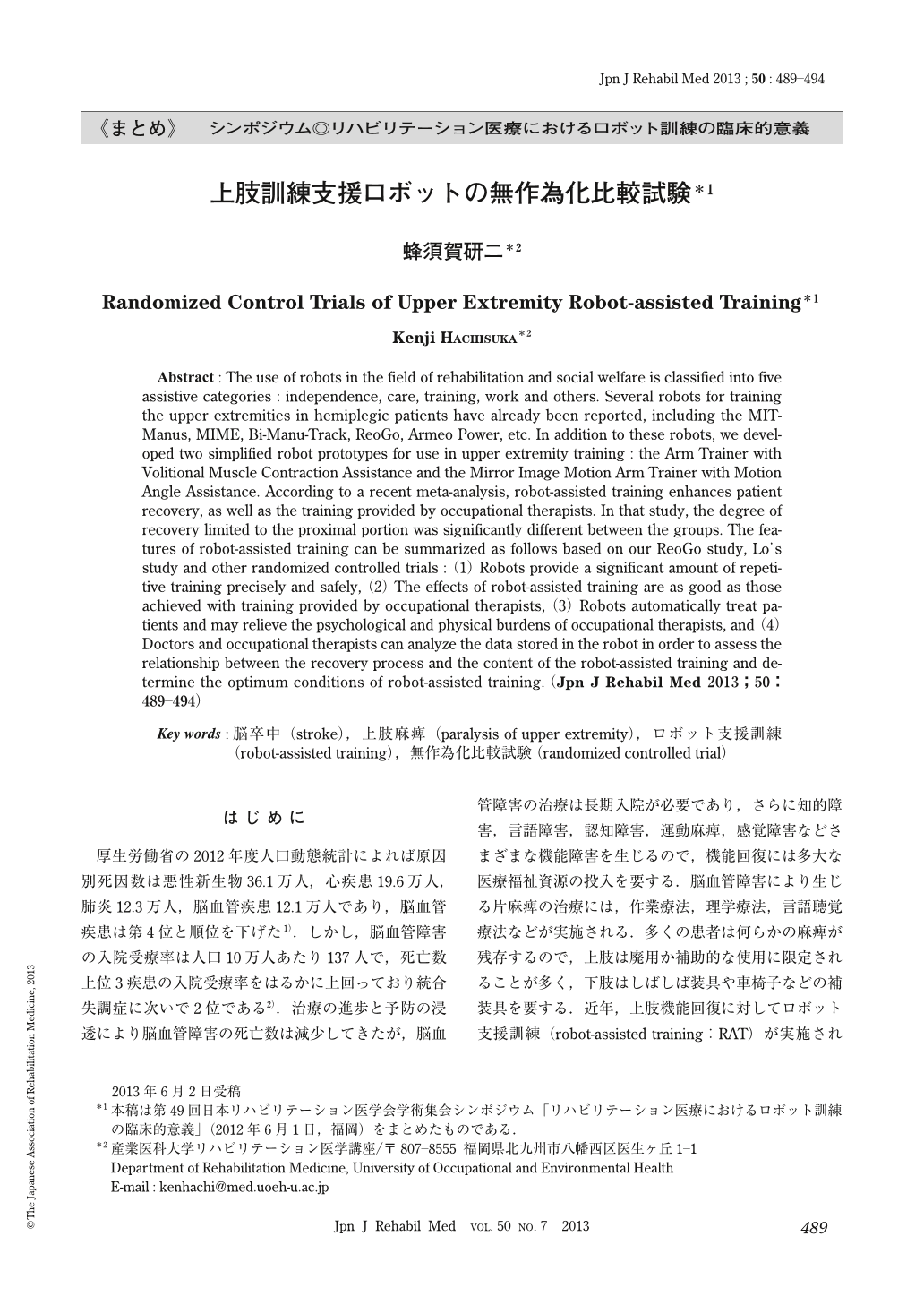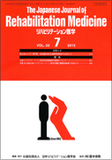Japanese
English
- 販売していません
- Abstract 文献概要
- 1ページ目 Look Inside
- 参考文献 Reference
はじめに
厚生労働省の2012年度人口動態統計によれば原因別死因数は悪性新生物36.1万人,心疾患19.6万人,肺炎12.3万人,脳血管疾患12.1万人であり,脳血管疾患は第4位と順位を下げた1).しかし,脳血管障害の入院受療率は人口10万人あたり137人で,死亡数上位3疾患の入院受療率をはるかに上回っており統合失調症に次いで2位である2).治療の進歩と予防の浸透により脳血管障害の死亡数は減少してきたが,脳血管障害の治療は長期入院が必要であり,さらに知的障害,言語障害,認知障害,運動麻痺,感覚障害などさまざまな機能障害を生じるので,機能回復には多大な医療福祉資源の投入を要する.脳血管障害により生じる片麻痺の治療には,作業療法,理学療法,言語聴覚療法などが実施される.多くの患者は何らかの麻痺が残存するので,上肢は廃用か補助的な使用に限定されることが多く,下肢はしばしば装具や車椅子などの補装具を要する.近年,上肢機能回復に対してロボット支援訓練(robot-assisted training:RAT)が実施されるようになってきたので3),自験例を含め片麻痺上肢へのRATの概要を述べる.
Abstract : The use of robots in the field of rehabilitation and social welfare is classified into five assistive categories : independence, care, training, work and others. Several robots for training the upper extremities in hemiplegic patients have already been reported, including the MIT-Manus, MIME, Bi-Manu-Track, ReoGo, Armeo Power, etc. In addition to these robots, we developed two simplified robot prototypes for use in upper extremity training : the Arm Trainer with Volitional Muscle Contraction Assistance and the Mirror Image Motion Arm Trainer with Motion Angle Assistance. According to a recent meta-analysis, robot-assisted training enhances patient recovery, as well as the training provided by occupational therapists. In that study, the degree of recovery limited to the proximal portion was significantly different between the groups. The features of robot-assisted training can be summarized as follows based on our ReoGo study, Lo's study and other randomized controlled trials : (1) Robots provide a significant amount of repetitive training precisely and safely, (2) The effects of robot-assisted training are as good as those achieved with training provided by occupational therapists, (3) Robots automatically treat patients and may relieve the psychological and physical burdens of occupational therapists, and (4) Doctors and occupational therapists can analyze the data stored in the robot in order to assess the relationship between the recovery process and the content of the robot-assisted training and determine the optimum conditions of robot-assisted training.

Copyright © 2013, The Japanese Association of Rehabilitation Medicine. All rights reserved.


